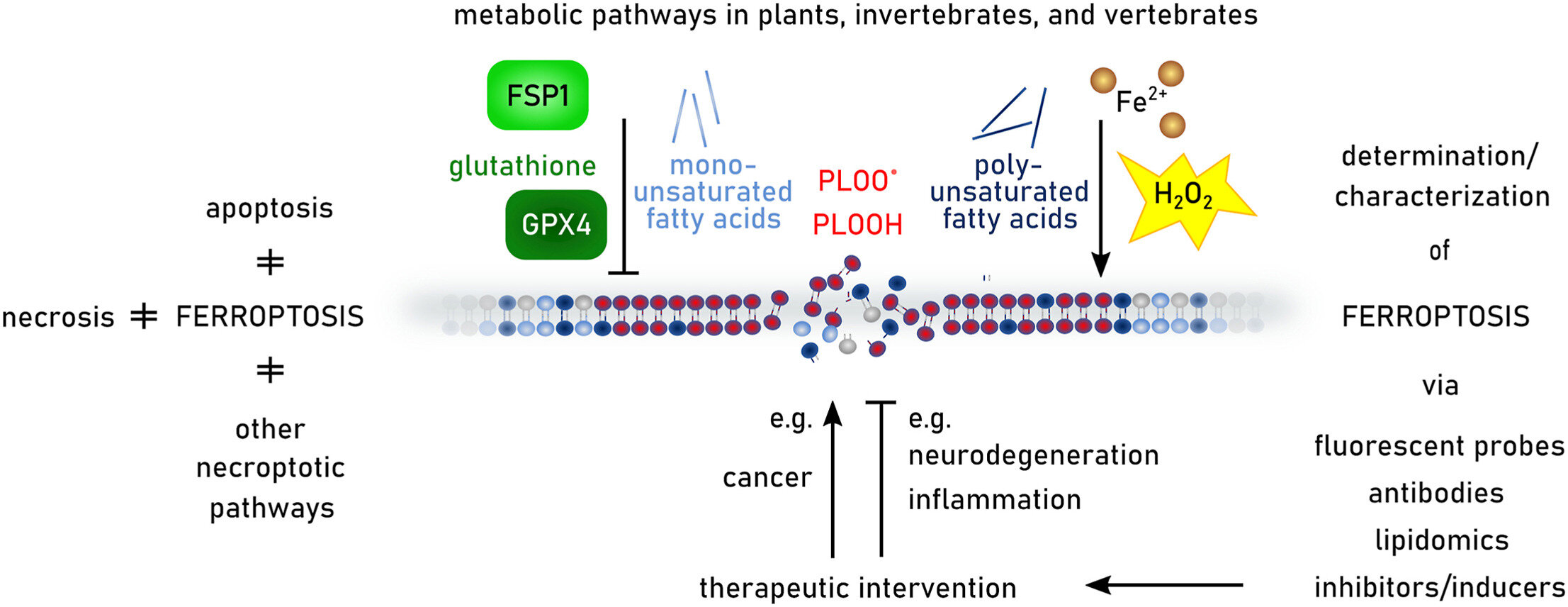Comprehensive review of important cell death mechanisms

Graphic summary. Photo credit: Redox biology (2024). DOI: 10.1016/j.redox.2024.103211
× close
Graphic summary. Photo credit: Redox biology (2024). DOI: 10.1016/j.redox.2024.103211
Ferroptosis is a cell death mechanism that has only been known for a relatively short time and was named in 2012. This so-called non-apoptotic cell death occurs when there are too many oxygen radicals and free iron in a cell. Certain molecules in the cell membrane, so-called phospholipids, are then oxidized and thereby damaged. Without an appropriate counter-reaction, the cell membrane is eventually destroyed, which leads to the death of the entire cell.
A full issue of the scientific journal Redox biology has now committed itself to the task of providing a comprehensive summary of existing knowledge on all aspects of ferroptosis.
The 90-strong, international and interdisciplinary team of authors includes two working groups with the participation of four researchers from HHU who were significantly involved: Professor Dr. Tom Lüdde, Director of the Clinic for Gastroenterology, Hepatology and Infectious Diseases; PD Dr. Carsten Berndt, Head of the Thiology Research Group at the Clinic for Neurology; Dr. Carolin Lohr, Clinic for Gastroenterology, Hepatology and Infectious Diseases; Leonie Thewes, Clinic for Neurology. The clinics are part of the University Hospital Düsseldorf.
“The article highlights the enzymes involved, metabolic requirements, regulatory processes, conditions related to ferroptosis as well as experimental methods for investigating this cell death mechanism,” says lead author PD Dr. Carsten Berndt.
Ferroptosis occurs under abnormal conditions and has been described in connection with many pathological conditions. The cell death mechanism plays a key role in all conditions that are based on a temporarily interrupted oxygen supply due to reduced blood circulation. These include stroke and heart attack, but the mechanism can also follow many surgical procedures.
Ferroptosis is also associated with cancer, neurodegenerative diseases, neuroinflammatory diseases such as multiple sclerosis, kidney disease and many other conditions.
While Dr. Berndt identifies physiological regulatory mechanisms of ferroptosis, Prof. Lüdde is investigating whether the targeted activation of cell death programs such as ferroptosis in cancer cells can offer new treatment options, for example for liver cancer, that are more targeted and cause fewer side effects than conventional chemotherapies.
The two authors agree on this: “Several ferroptosis inhibitors designed to stop the mechanism are already in clinical trials, as are various ways of specifically triggering ferroptosis. However, there is still a long way to go before these approaches find their way into everyday clinical practice.”
A distinction is made between programmed cell death (apoptosis), in which the organism causes the death of a damaged cell in a targeted and controlled manner, unregulated cell death (necrosis) and various intermediate stages, of which ferroptosis is one of the best known mechanisms. Even if certain regulatory mechanisms are present, the cell ultimately bursts and releases potentially harmful substances into the environment in an uncontrolled manner.
More information:
Carsten Berndt et al, Ferroptosis in health and disease, Redox biology (2024). DOI: 10.1016/j.redox.2024.103211
Information about the magazine:
Redox biology



